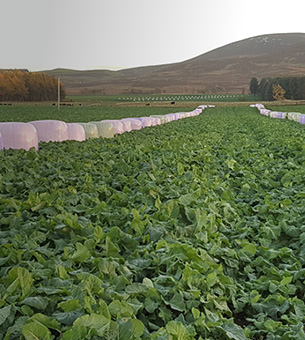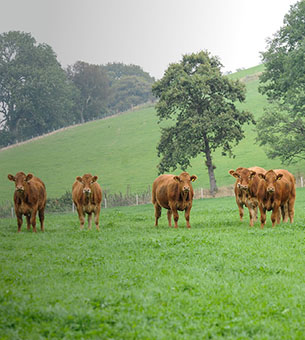The benefits of reseeding grazing swards are wide-ranging. They include improvements in dry matter yield, sward quality (DMD), and crude protein compared to permanent pasture. Reseeding in August/early September can result in increased grass availability in spring. Many farmers opted for an autumn reseed this year due to both the quantity of grass out on farms and the weather.
It’s important to monitor these reseeds closely now to ensure they are not being damaged by pests and to assess how they are establishing. It’s worth paying close attention to weeds, particularly chickweed, during establishment so your reseed’s potential isn’t compromised. Similarly grazing the new swards as soon as possible also contributes positively to its future yields.
Weed control
Reducing competition from weeds in the early stages of establishment can contribute significantly to the future success of the new swards. Post-emergence herbicide provides the best weed control and is the most cost-effective option, but timing is critical. For the best results in new swards, weeds should be sprayed when they are growing actively but still small. For example, dock leaves should be no bigger than a €2 coin. This is usually around four to six weeks after sowing when there are three leaves on the grass and one true leaf on the clover (if present).
Some herbicides are not permitted for use after 31st August, so check the product label, and remember the emergency use granted for the clover-safe spray, Clovermax, expired on 11th September. Due to the limitations on weed control in swards containing clover, some farmers selected to sow grass alone initially, with the intention of stitching clover in next spring once the grass is established and competition from weeds is controlled.
Early grazing
Check the product label too for the grazing interval as early grazing is recommended for the development of the sward. As soon as the new sward passes the ‘pull test’ – when grass pulled by hand breaks off without the roots coming up – it can be safely grazed. Keep an eye on the weather and graze when ground conditions allow. Grazing in the early weeks results in better yields the following year as it encourages tillering and a denser sward in spring.
Allowing a reseeded sward to carry too high a cover for too long can cause tiller death and allow weeds to establish. Even swards intended for silage should be grazed initially to encourage the sward to tiller.
Consider grazing with light cattle or youngstock at this time of year to prevent damage to the sward and soil compaction.



